Xinjiang Lu
TimeFound: A Foundation Model for Time Series Forecasting
Mar 06, 2025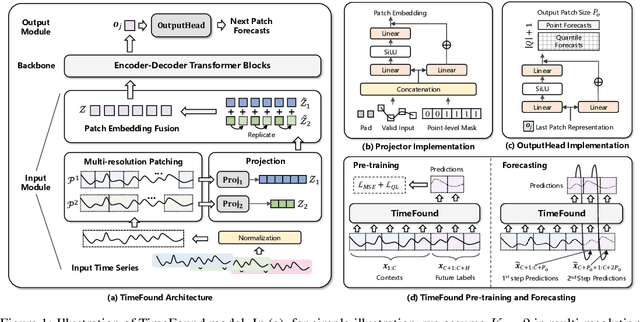
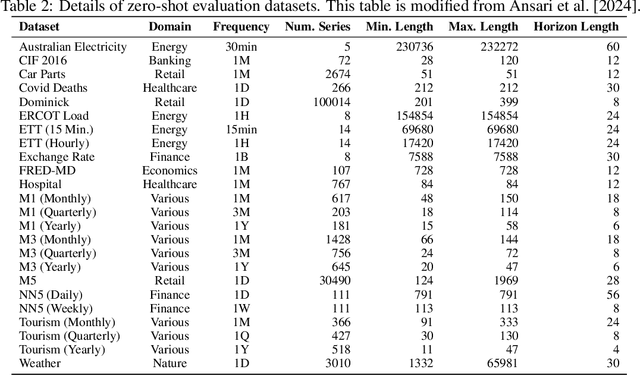
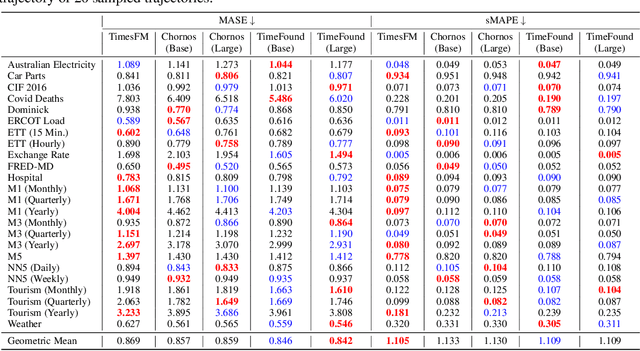
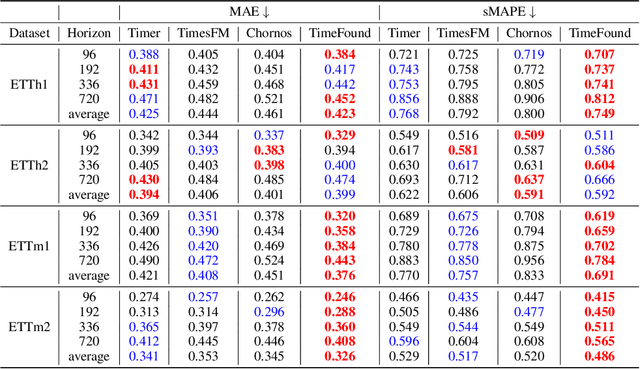
Abstract:We present TimeFound, an encoder-decoder transformer-based time series foundation model for out-of-the-box zero-shot forecasting. To handle time series data from various domains, TimeFound employs a multi-resolution patching strategy to capture complex temporal patterns at multiple scales. We pre-train our model with two sizes (200M and 710M parameters) on a large time-series corpus comprising both real-world and synthetic datasets. Over a collection of unseen datasets across diverse domains and forecasting horizons, our empirical evaluations suggest that TimeFound can achieve superior or competitive zero-shot forecasting performance, compared to state-of-the-art time series foundation models.
Generative Time Series Forecasting with Diffusion, Denoise, and Disentanglement
Jan 08, 2023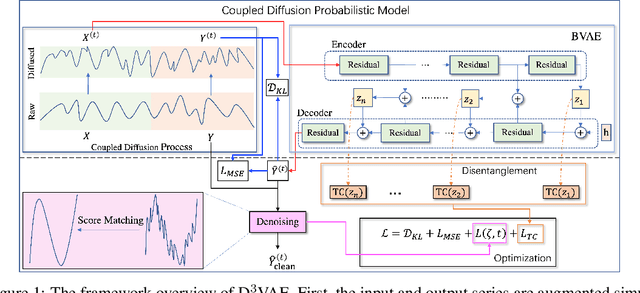

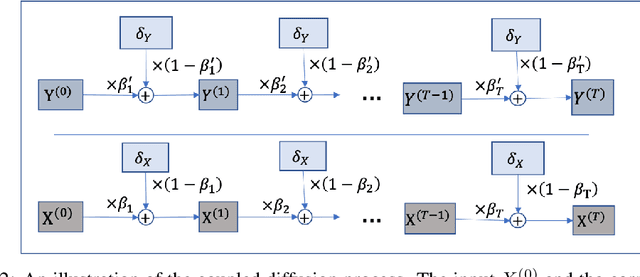
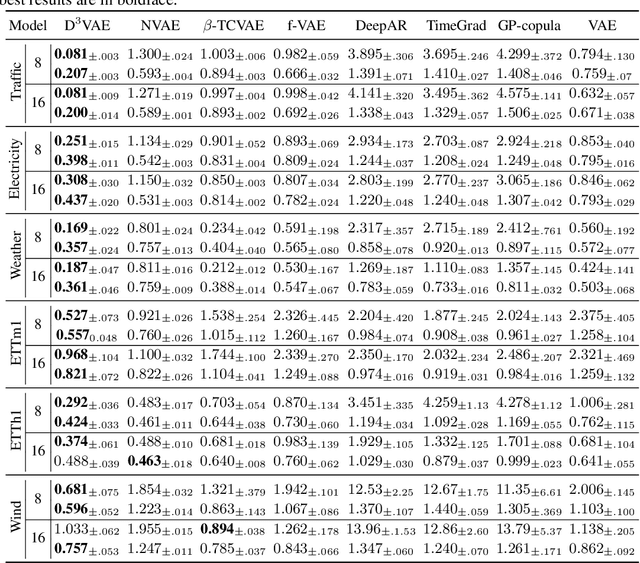
Abstract:Time series forecasting has been a widely explored task of great importance in many applications. However, it is common that real-world time series data are recorded in a short time period, which results in a big gap between the deep model and the limited and noisy time series. In this work, we propose to address the time series forecasting problem with generative modeling and propose a bidirectional variational auto-encoder (BVAE) equipped with diffusion, denoise, and disentanglement, namely D3VAE. Specifically, a coupled diffusion probabilistic model is proposed to augment the time series data without increasing the aleatoric uncertainty and implement a more tractable inference process with BVAE. To ensure the generated series move toward the true target, we further propose to adapt and integrate the multiscale denoising score matching into the diffusion process for time series forecasting. In addition, to enhance the interpretability and stability of the prediction, we treat the latent variable in a multivariate manner and disentangle them on top of minimizing total correlation. Extensive experiments on synthetic and real-world data show that D3VAE outperforms competitive algorithms with remarkable margins. Our implementation is available at https://github.com/PaddlePaddle/PaddleSpatial/tree/main/research/D3VAE.
Towards Long-Term Time-Series Forecasting: Feature, Pattern, and Distribution
Jan 05, 2023



Abstract:Long-term time-series forecasting (LTTF) has become a pressing demand in many applications, such as wind power supply planning. Transformer models have been adopted to deliver high prediction capacity because of the high computational self-attention mechanism. Though one could lower the complexity of Transformers by inducing the sparsity in point-wise self-attentions for LTTF, the limited information utilization prohibits the model from exploring the complex dependencies comprehensively. To this end, we propose an efficient Transformerbased model, named Conformer, which differentiates itself from existing methods for LTTF in three aspects: (i) an encoder-decoder architecture incorporating a linear complexity without sacrificing information utilization is proposed on top of sliding-window attention and Stationary and Instant Recurrent Network (SIRN); (ii) a module derived from the normalizing flow is devised to further improve the information utilization by inferring the outputs with the latent variables in SIRN directly; (iii) the inter-series correlation and temporal dynamics in time-series data are modeled explicitly to fuel the downstream self-attention mechanism. Extensive experiments on seven real-world datasets demonstrate that Conformer outperforms the state-of-the-art methods on LTTF and generates reliable prediction results with uncertainty quantification.
Towards Table-to-Text Generation with Pretrained Language Model: A Table Structure Understanding and Text Deliberating Approach
Jan 05, 2023



Abstract:Although remarkable progress on the neural table-to-text methods has been made, the generalization issues hinder the applicability of these models due to the limited source tables. Large-scale pretrained language models sound like a promising solution to tackle such issues. However, how to effectively bridge the gap between the structured table and the text input by fully leveraging table information to fuel the pretrained model is still not well explored. Besides, another challenge of integrating the deliberation mechanism into the text-to-text pretrained model for solving the table-to-text task remains seldom studied. In this paper, to implement the table-to-text generation with pretrained language model, we propose a table structure understanding and text deliberating approach, namely TASD. Specifically, we devise a three-layered multi-head attention network to realize the table-structure-aware text generation model with the help of the pretrained language model. Furthermore, a multi-pass decoder framework is adopted to enhance the capability of polishing generated text for table descriptions. The empirical studies, as well as human evaluation, on two public datasets, validate that our approach can generate faithful and fluent descriptive texts for different types of tables.
SDWPF: A Dataset for Spatial Dynamic Wind Power Forecasting Challenge at KDD Cup 2022
Aug 08, 2022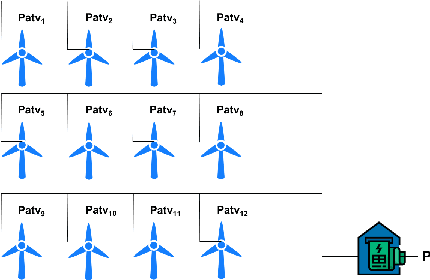

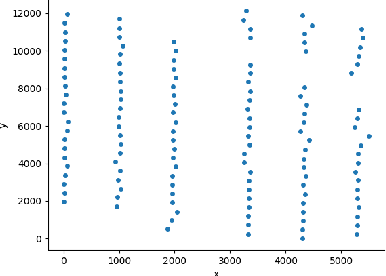
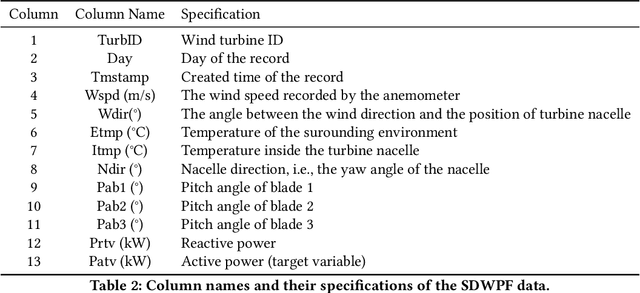
Abstract:The variability of wind power supply can present substantial challenges to incorporating wind power into a grid system. Thus, Wind Power Forecasting (WPF) has been widely recognized as one of the most critical issues in wind power integration and operation. There has been an explosion of studies on wind power forecasting problems in the past decades. Nevertheless, how to well handle the WPF problem is still challenging, since high prediction accuracy is always demanded to ensure grid stability and security of supply. We present a unique Spatial Dynamic Wind Power Forecasting dataset: SDWPF, which includes the spatial distribution of wind turbines, as well as the dynamic context factors. Whereas, most of the existing datasets have only a small number of wind turbines without knowing the locations and context information of wind turbines at a fine-grained time scale. By contrast, SDWPF provides the wind power data of 134 wind turbines from a wind farm over half a year with their relative positions and internal statuses. We use this dataset to launch the Baidu KDD Cup 2022 to examine the limit of current WPF solutions. The dataset is released at https://aistudio.baidu.com/aistudio/competition/detail/152/0/datasets.
Out-of-Town Recommendation with Travel Intention Modeling
Feb 06, 2021
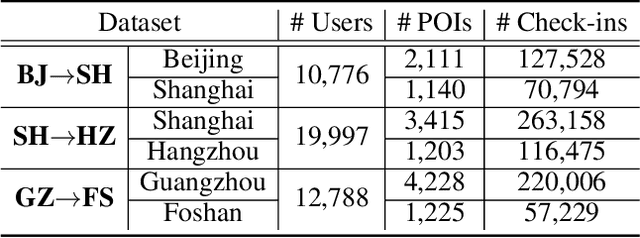
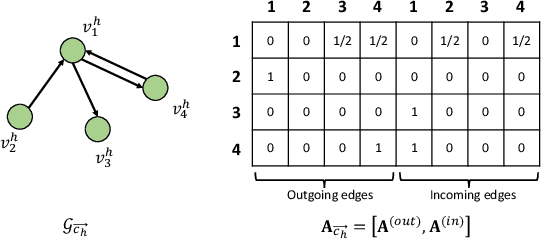

Abstract:Out-of-town recommendation is designed for those users who leave their home-town areas and visit the areas they have never been to before. It is challenging to recommend Point-of-Interests (POIs) for out-of-town users since the out-of-town check-in behavior is determined by not only the user's home-town preference but also the user's travel intention. Besides, the user's travel intentions are complex and dynamic, which leads to big difficulties in understanding such intentions precisely. In this paper, we propose a TRAvel-INtention-aware Out-of-town Recommendation framework, named TRAINOR. The proposed TRAINOR framework distinguishes itself from existing out-of-town recommenders in three aspects. First, graph neural networks are explored to represent users' home-town check-in preference and geographical constraints in out-of-town check-in behaviors. Second, a user-specific travel intention is formulated as an aggregation combining home-town preference and generic travel intention together, where the generic travel intention is regarded as a mixture of inherent intentions that can be learned by Neural Topic Model (NTM). Third, a non-linear mapping function, as well as a matrix factorization method, are employed to transfer users' home-town preference and estimate out-of-town POI's representation, respectively. Extensive experiments on real-world data sets validate the effectiveness of the TRAINOR framework. Moreover, the learned travel intention can deliver meaningful explanations for understanding a user's travel purposes.
Modeling Heterogeneous Relations across Multiple Modes for Potential Crowd Flow Prediction
Jan 18, 2021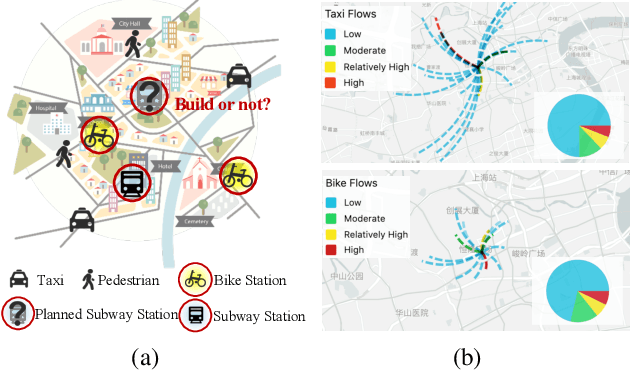

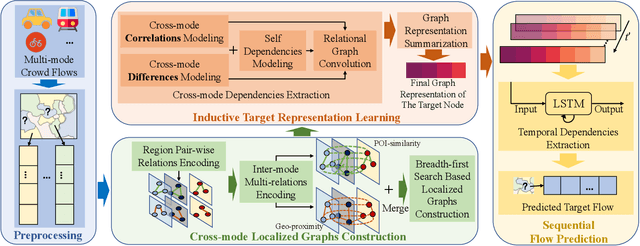
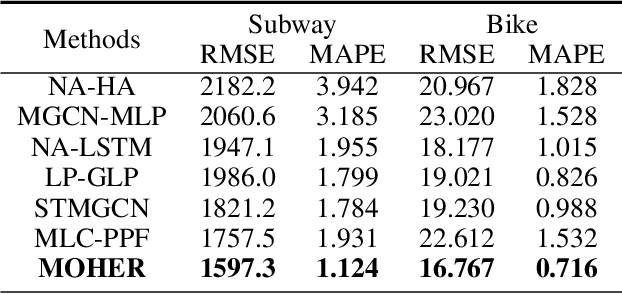
Abstract:Potential crowd flow prediction for new planned transportation sites is a fundamental task for urban planners and administrators. Intuitively, the potential crowd flow of the new coming site can be implied by exploring the nearby sites. However, the transportation modes of nearby sites (e.g. bus stations, bicycle stations) might be different from the target site (e.g. subway station), which results in severe data scarcity issues. To this end, we propose a data driven approach, named MOHER, to predict the potential crowd flow in a certain mode for a new planned site. Specifically, we first identify the neighbor regions of the target site by examining the geographical proximity as well as the urban function similarity. Then, to aggregate these heterogeneous relations, we devise a cross-mode relational GCN, a novel relation-specific transformation model, which can learn not only the correlations but also the differences between different transportation modes. Afterward, we design an aggregator for inductive potential flow representation. Finally, an LTSM module is used for sequential flow prediction. Extensive experiments on real-world data sets demonstrate the superiority of the MOHER framework compared with the state-of-the-art algorithms.
 Add to Chrome
Add to Chrome Add to Firefox
Add to Firefox Add to Edge
Add to Edge